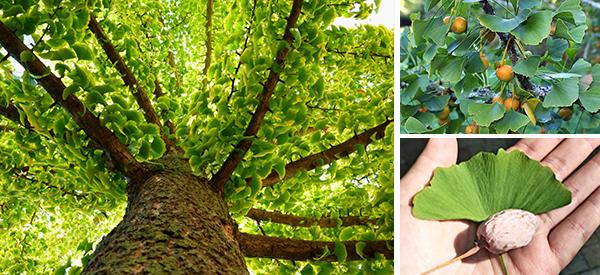
How to Identify the Ginkgo Biloba Tree: Does It Grow on Your Street?
Ginkgo is associated with Chinese medicine but the tree can be found growing throughout the United States. This ornamental tree is often planted in parks and is easily recognizable by its distinctive leaves, which resemble the maidenhair fern. Ginkgo is known for heart and brain health. Once you learn to identify it in your neighborhood, you can begin to harvest the leaves for all their positive benefits.
Identification
Ginko Bilboa, or just ginkgo, is an ornamental tree commonly found in cities as it thrives in disturbed land. It is a large tree that can grow to over one hundred feet tall. They thrive in direct sun and are extremely long-lived.
It is native to China, where you can find trees that are over 4000 years old.
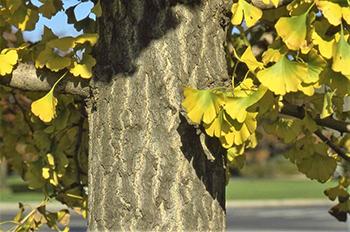
Often referred to as a living fossil, it is the only remaining member of it a genus that dates back over 200 million years.
Bark
The bark can be grayish or brown with a corky texture. As it matures it will become browner and develop ridges. The wood is soft.
Leaves
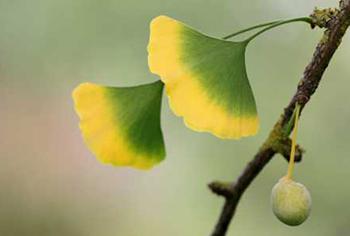
Probably the easiest way to identify ginkgo is by the leaves. The leaves have a distinctive fan shape that is similar to the maidenhair fern and so it is often referred to as the maidenhair tree. The leaves have a leathery texture. They can grow up to 3 inches and often twice as wide. There is a central notch that divides the leaves into two lobes. Ginkgo is a deciduous tree and in the fall the leaves change to a beautiful yellow. This is one of the reasons ginkgo is so popular.
Flowers
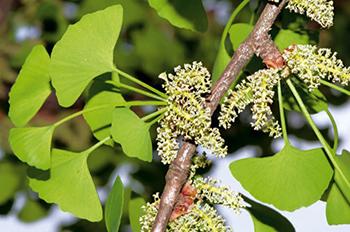
Ginko has both male and female trees and both produce flowers. The trees flower in April. However, flowering doesn’t usually start until the tree is at least ten years old sometimes not until the tree is close to forty.
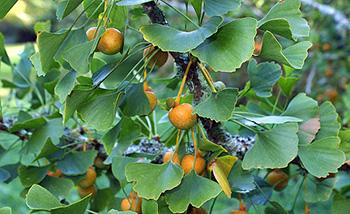
Female trees will produce fruit that is attractive but has a terrible smell so male trees are generally preferred. The fruits are poisonous and the seeds must be processed in order to be edible.
Male trees bear pollen and female trees, ovules, commonly called “fruit.”
A mature ovule resembles a small golden plum. Beneath the fleshy outer layer, there is a woody shell that looks like large pistachio. This “seed” contains an almond-like “nut”.
When to harvest
While the seeds can be used medicinally, most commonly people use the leaves. You can harvest the Ginkgo leaves in spring and summer but the best time to harvest them is when they turn yellow in the fall. Then they are “sweet leaves”.
After you harvest the leaves you will want to dry them for storage and later use. Either hang them in a cool dark place or place them in a dehydrator. The leaves can be drunk in a tea or made into a tincture.
Health benefits of Ginko
Ginko has been used in Chinese medicine for thousands of years and modern research has shown the many health benefits of this ancient tree.
- Anti-inflammatory: Many chronic diseases can increase inflammation in your body. Numerous studies have shown ginkgo to effective at treating inflammatory conditions. Ginkgo has been shown to be effective at treating inflammation associated with arthritis, irritable bowel disease, cancer, heart disease, and stroke.
- Aids Circulation: In Chinese medicine, ginkgo is said to open channels of energy to varying organs. Studies have shown that ginkgo can help increase blood flow to various parts of your body. This can have a positive effect on heart and brain health and lower stroke risk.
- Improves Brain Function: One thing ginkgo is associated with is improving memory, alertness, and the ability to focus. It is also thought to help patients suffering from Alzheimer’s and dementia. This could be because of ginkgo’s positive effects on blood flow to the brain.
- Anxiety and Depression: Studies have shown that ginkgo can help improve feelings of anxiety and depression and help elevate mood. It has also been shown to be effective in treating some of the symptoms associated with PMS.
- Headaches and Migraines: Depending on the cause of your headache, ginkgo can be an effective treatment. If your headache is caused by constricted blood vessels ginkgo can help dilate blood vessels and improve your symptoms.
- Vertigo: Nothing is worse than the spinning feelings associated with vertigo. Studies have shown that Ginkgo is effective at treating vertigo.
How to Use Ginkgo
There are many different ways to consume ginkgo, but most commonly people use the leaves. These can be purchased a supplement in capsule form, drank as a tea, or taken in extract form as a tincture.
You can make a tincture easily in your own home with materials you likely have already.
Ginkgo Biloba Tincture
Ingredients:
- 3-4 ounces of yellow ginkgo leaves
- Vodka (or other alcohol at least 80 proof)
- Mason jar
- Coffee filter
- Funnel
- Tinted bottles for storage
Recipe:
- First, crush the leaves to increase the surface area
- Place the crushed leaves in the mason jar

- Cover the leaves with vodka to a minimum of two fingers above the top of the roots. If you are using dry leaves add more vodka as the material will absorb the liquid. Do not exceed double the height of leaves or your tincture will not be as strong.
- Seal the jar and leave it in a cool dark place for at least two weeks

- When your tincture is ready place a coffee filter inside a funnel and strain the liquid into a tinted bottle for storage.

- Store in a cool dark place
Use a little as a few drops to start and no more than a teaspoon daily.
Ginkgo has a long history of use in Chinese medicine and modern studies are proving those effects. Luckily it is easy to identify. Once you know these distinctive leaves you can begin harvesting them and enjoying the benefits of this living fossil.
You may also like:
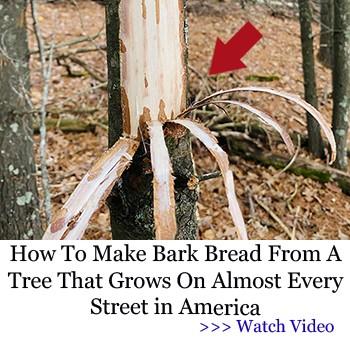 10 Trees Everyone Should Know and Why
10 Trees Everyone Should Know and Why
Do This Every Day To Improve Your Hearing (Video)
Kava: The Most Powerful Herb To Reduce Stress

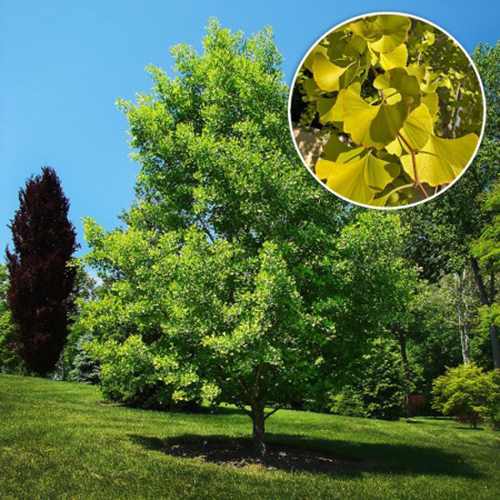
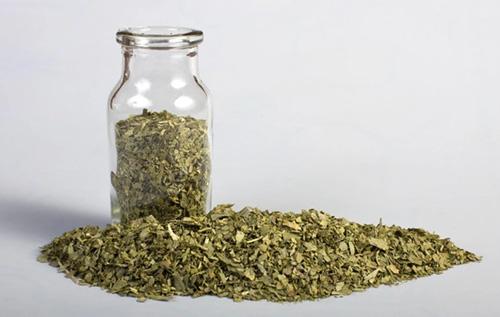
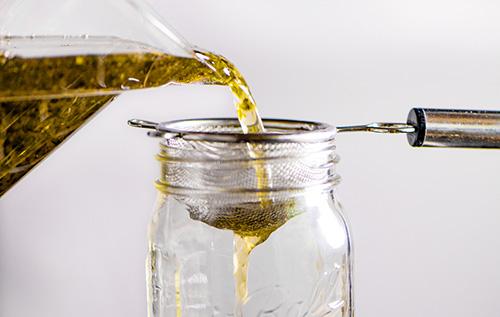
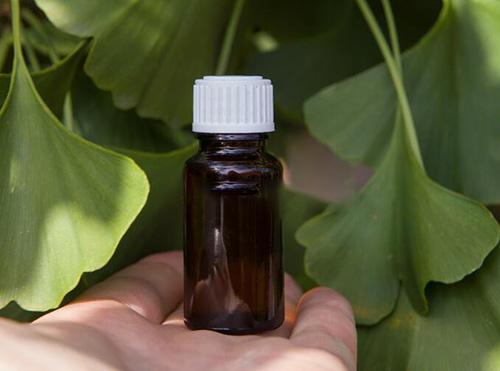
So if we make the tincture and we wait two weeks and use it, it doesn’t say if we use it internally or externally. Can you tell me which? I am not as smart as the average bear.
Hi Debi,
Tinctures should be taken internally. The best way to use liquid herbal tinctures is to put the suggested amount in a glass of water, tea, or juice and drink the entire contents. Tinctures can also be administered directly into the mouth.
If there is anything else I can help you with, please don’t hesitate to let me know.
God bless!
Do you pick green leaves and dry them? Do you soak the leaves freshly picked? Do you wait for the leaves to dry and drop? Thanks for the feedback!
Hi Cynthia,
Thank you for your comment.
The perfect time to gather the leaves for making a tincture is when they are turning yellow. Just gather a handful of yellow leaves, chop them roughly and submerge in vodka or brandy with a minimum strength of 40%vol. Leave for two weeks, shaking every day while you talk to them, offering your gratitude and love, and asking for their medicine.
Or you can just purchase Ginkgo Biloba Dried Leaves and follow the same steps for the tincture.
God bless!
Hi, can you tell me how long the tincture lasts before expiring please?
Hi, can you tell me how long the tincture lasts before expiring please?